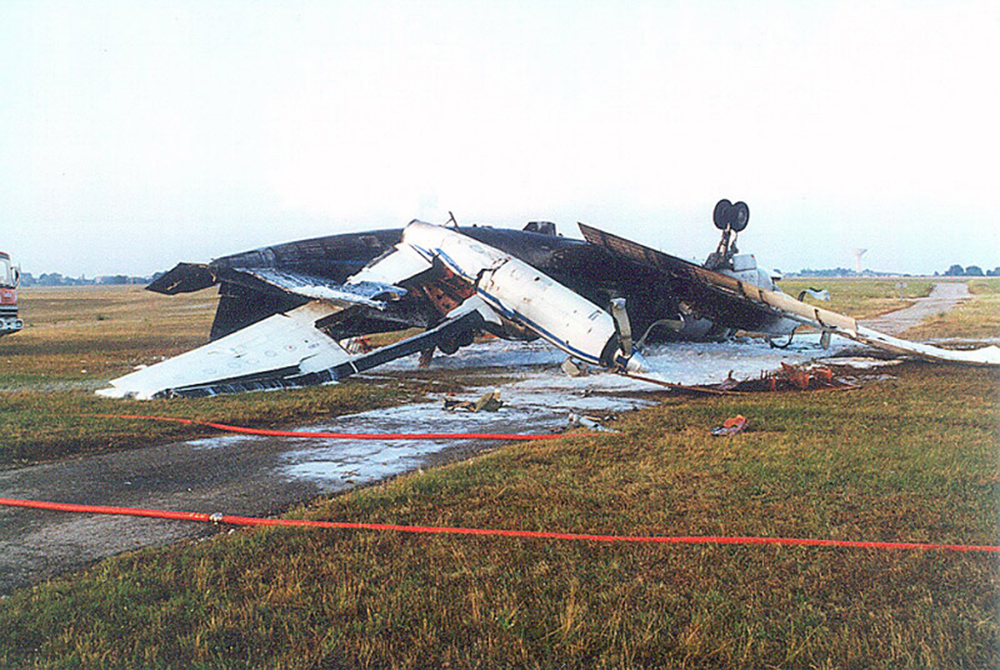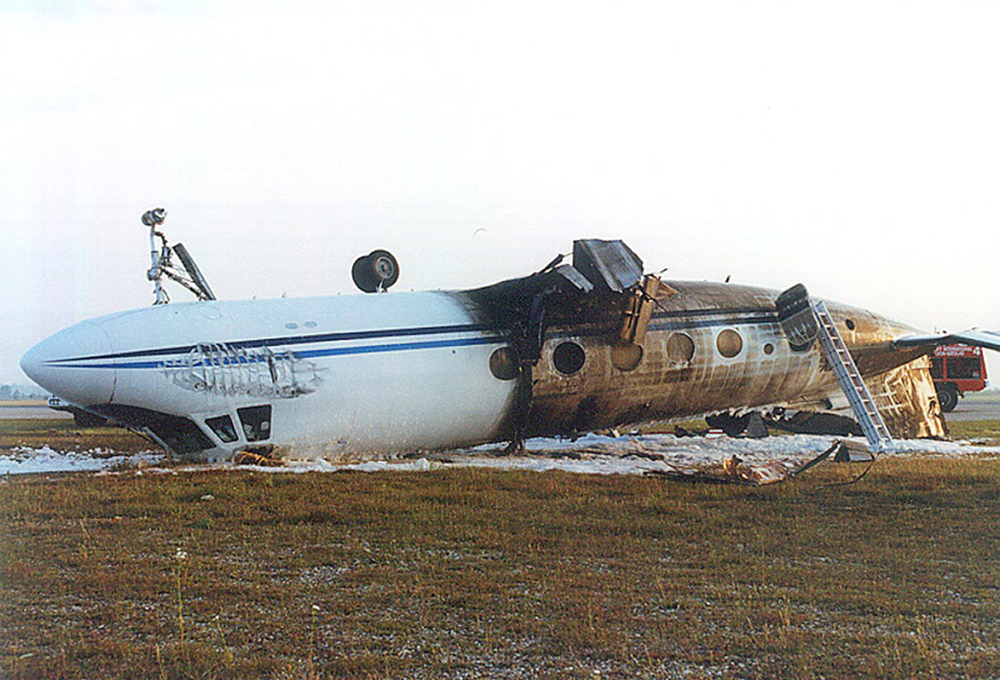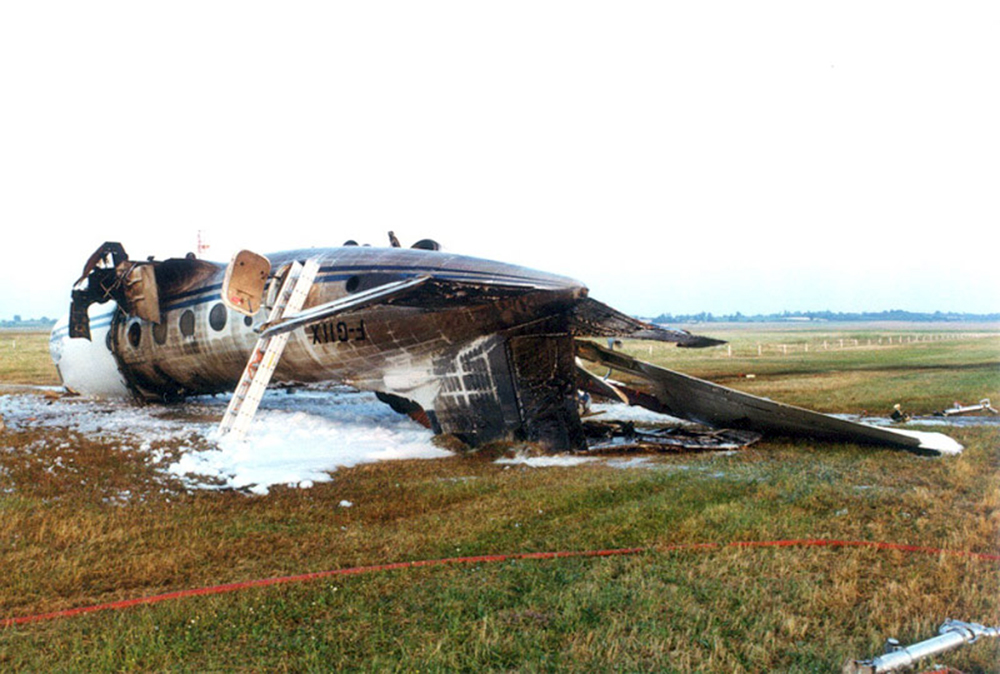Country
Crash of a Grumman G-159 Gulfstream GI in Mogadishu
Date & Time:
Feb 19, 1998 at 1200 LT
Registration:
5Y-BMR
Survivors:
Yes
Schedule:
Nairobi - Mogadishu
MSN:
081
YOM:
1961
Crew on board:
3
Crew fatalities:
Pax on board:
20
Pax fatalities:
Other fatalities:
Total fatalities:
0
Circumstances:
After landing at Mogadishu Airport, the propeller on the right engine went into fine pitch. The crew lost control of the airplane that veered off runway to the right. While contacting soft ground, the aircraft lost its undercarriage and its tail before coming to rest, broken in two. All 23 occupants evacuated safely and the aircraft was damaged beyond repair.
Crash of a Grumman G-159 Gulfstream I in Lubi
Date & Time:
Aug 2, 1996
Registration:
N190LE
Survivors:
Yes
MSN:
190
YOM:
1968
Crew on board:
2
Crew fatalities:
Pax on board:
0
Pax fatalities:
Other fatalities:
Total fatalities:
0
Circumstances:
The crew was completing an humanitarian flight from Kenya. Upon landing on soft ground at Lubi Airstrip, the nose gear sank then collapsed. The aircraft slid on its nose for few dozen metres and both propellers struck the ground as well. The aircraft came to rest and was damaged beyond repair. Both pilots escaped uninjured. At the time of the accident, the aircraft was still registered HK-4022X while its official new registration was N190LE since last 9 of July.
Crash of a Grumman G-159 Gulfstream GI in Lyon
Date & Time:
Jun 29, 1994 at 2000 LT
Registration:
F-GIIX
Survivors:
Yes
Schedule:
Rouen - Lyon
MSN:
128
YOM:
1964
Crew on board:
3
Crew fatalities:
Pax on board:
24
Pax fatalities:
Other fatalities:
Total fatalities:
0
Circumstances:
On approach to Lyon-Satolas Airport, the crew realized he was not properly aligned with the runway centerline and decided to initiate a go-around procedure. Power was added on both engines but the left engine failed to respond. The aircraft lost height and struck the runway surface with its left wing, bounced, overturned and came to rest upside down, bursting into flames. All 27 occupants were evacuated, among them nine were injured. The aircraft was destroyed.





Crash of a Grumman G-159 Gulfstream IC in Pantelleria
Date & Time:
Jun 22, 1992
Registration:
I-MDDD
Survivors:
Yes
MSN:
143
YOM:
1964
Crew on board:
3
Crew fatalities:
Pax on board:
15
Pax fatalities:
Other fatalities:
Total fatalities:
0
Circumstances:
The departure from Pantelleria Airport was initiated in strong crosswind conditions. During the takeoff roll, the aircraft deviated to the left and the crew decided to abort. The aircraft veered off runway, lost its right main gear and came to rest. All 18 occupants escaped uninjured while the aircraft was damaged beyond repair.

Crash of a Grumman G-159 Gulfstream I in Zacapu
Date & Time:
Oct 11, 1990
Registration:
XB-ESO
Survivors:
Yes
MSN:
15
YOM:
1959
Crew on board:
2
Crew fatalities:
Pax on board:
11
Pax fatalities:
Other fatalities:
Total fatalities:
0
Circumstances:
After landing, the twin engine aircraft went out control, veered off runway and collided with trees. All 13 occupants evacuated safely and the aircraft was damaged beyond repair.
Probable cause:
It is believed that the loss of control was the consequence of the poor runway surface condition.



